The fourth part in a series on the history of how we conquered the sound barrier. Written by Dale J Ferrier
Touching the Barrier (continued)
The Supersonic Glider
For a moment, let us place ourselves into an alternative version of history. After years of war, German forces are in retreat and the Allies are sensing that final victory is approaching. But then, over England, a thin white streak draws across the sky. Whatever is making it is far too high up to see with the naked eye, and as those peering to the heavens strain to understand this strange event, there is a sudden Earth-shattering crack of thunder – on a clear day! The fastest fighters the Allies can muster are scrambled but never get anywhere close. High command is stunned as this strange new German aircraft flies far outside of what any of theirs can hope, flying its mission with complete impunity. This was the vision of Felix Kracht.
Kracht was a brilliant engineer working for Deutsche Forschungsanstalt Fur Segelflug (DFS) which developed gliders, including trainers for the Luftwaffe. As the Second World War progressed, and particularly as the tables began to turn, the German government pushed the development of radical new wonder weapons, especially aircraft. In 1944, Kracht began to develop an experimental glider designated the DFS228. The 228 design envisioned the use of a rocket motor that the pilot would use intermittently after being air-launched from a bomber to maintain a high-altitude glide whilst conducting reconnaissance sorties. Supposedly an unpowered 228 prototype conducted a few test flights in 1945 before being shelved as the situation for the Germans went from bad to worse.
The 228 however was only a stepping stone for Kracht who already began work on the DFS346 which was intended to take the concept of a rocket glider to the next step. The 228 had a rather conventional glider design save the use of a rocket motor, whereas the 346 would be of all metal construction and in addition to altitude, Kracht had speed in mind. With swept wings and powered by two Walter HWK 109-509 rockets, the 346 was to be propelled to an incredible Mach 2 at an altitude of up to 100,000ft – far outside anything the Allies could throw at it.
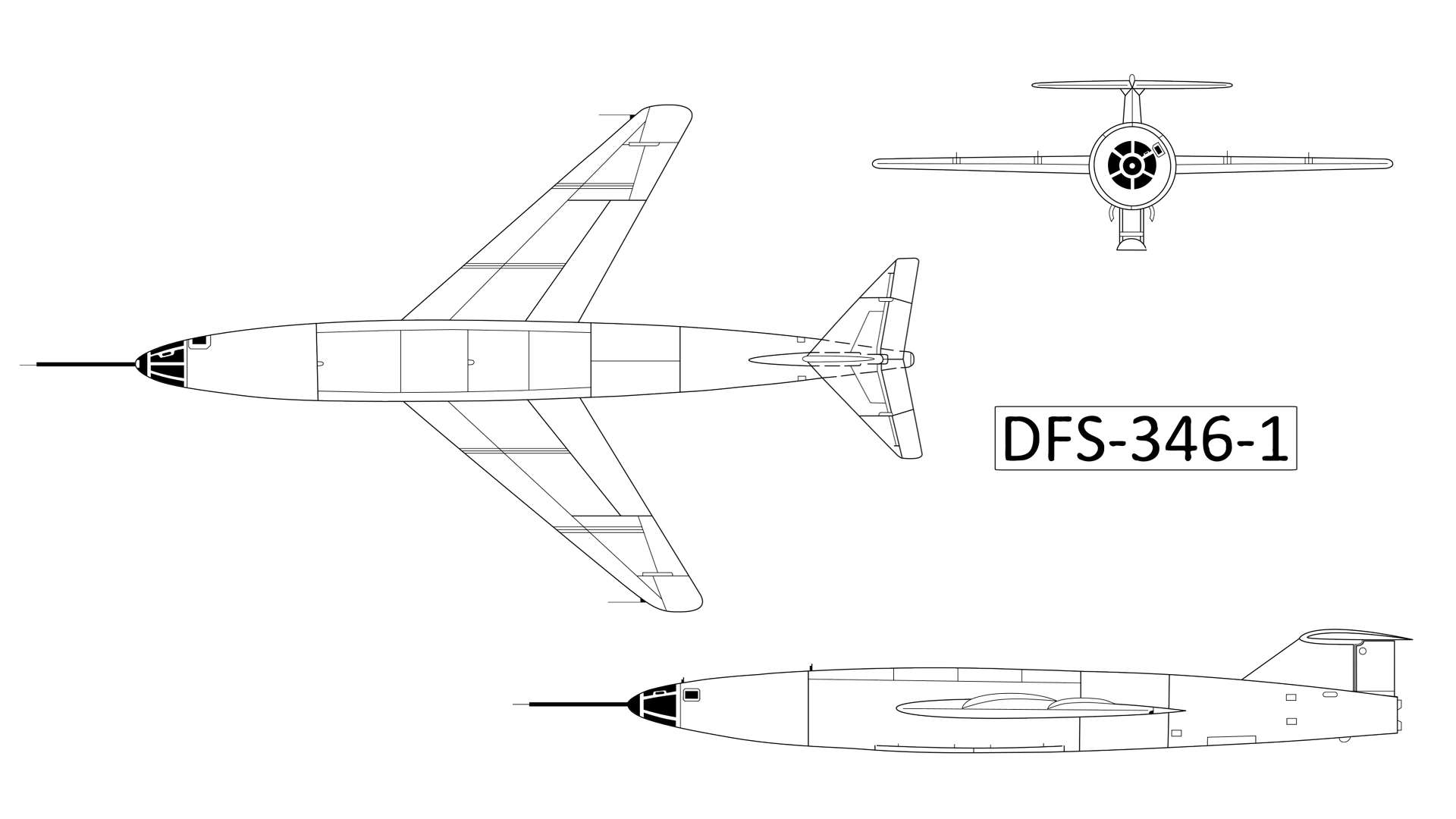
Launched from a mothership, likely a Dornier Do217, the 346 would fire one of its Walter rockets to reach its cruise speed and altitude. Then, the pilot laid on his stomach to help against the anticipated G-forces would periodically fire the other motor to maintain the cruise. When the mission was completed, it would glide back home and land on deployable skis. Should something go wrong, the cockpit of the 346 would jettison acting as an escape pod for which the pilot could later bail out.
Work began on a prototype at the Siebel factory, and a scale model of the 346 showed great promise during wind tunnel testing. But, like its slower cousin the 228, the project was shelved as the war approached its conclusion. The territory where the Siebel factory stood was captured by Soviet forces who took a great interest in the 346 project. With tensions between the Soviet Union and the West increasing, the Soviet Design Bureau No.2 (OKB-2) in October 1946 collected the work done by Siebel and relaunched the 346 project under Hans Reissing and Alexandr Bereznyak, renaming the design as the Samolyot 346.
The Soviets soon discovered that despite Kracht’s hopes, his design would be unable to even reach the Speed of Sound – less the Mach 2 envisioned. In addition to not being able to fly at the speeds intended, the aerodynamics of the 346 meant it flew on a knife edge. If the angle of attack increased just too much, the glider would enter an unrecoverable stall. But, not all of the 346 was a failure, the escape capsule worked well and was kept as part of the design.
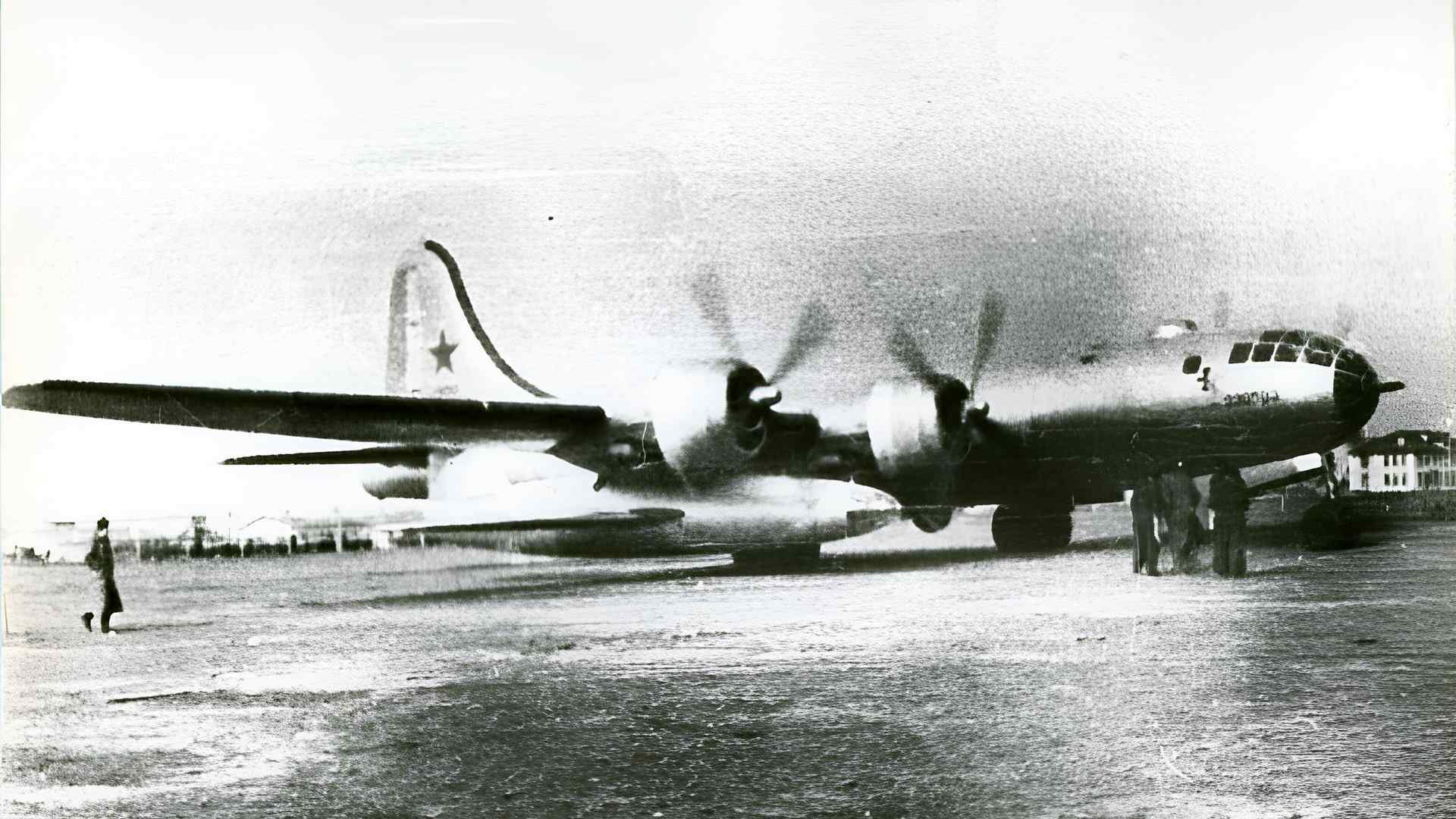
Despite the difficulties, Soviet engineers continued with the development of the 346 and added wing fences to help combat its stalling tendencies. By 1947, a full-scale unpowered prototype was ready and attached to the underside of a Tu-4 (a copy of the B-29), with Siebel test pilot Wolfgang Ziese at the controls. Ziese gave a positive report and subsequently, three additional prototypes were ordered. Engineers made updates to the design whilst building these extra prototypes and on September 10th, 1948, Ziese flew a second 346. This time, however, his verdict of the upgraded 346 would be less glowing than the original.
Finding the glider difficult to control, during the landing phase, the glider struck the ground while flying at 195mph, violently bouncing it 12ft back into the air before carrying on for another half a mile before landing again. The impact of this second landing caused the landing skies to collapse, breaking Ziese’s harness and causing his head to strike the canopy. He was knocked unconscious but very luckily escaped serious injury.
With Ziese recovering, Russian test pilot P Kazmin took over flying the 346 temporarily. Kazmin flew several sorties with some also ending in mishaps. Ziese had recovered by May 1951 and resumed his flying duties in the glider. In August of the same year, the Soviets felt confident enough to test the 346 with its rocket motors installed. After being dropped from a Tu-4, Ziese fired the rockets whereupon he claims the glider flew well and reached 560mph. But then he lost control and began descending rapidly. Determining that the situation was unrecoverable, Ziese deployed the escape capsule which fortunately worked well and escaped. The 346 continued out of control until it impacted the ground and exploded.
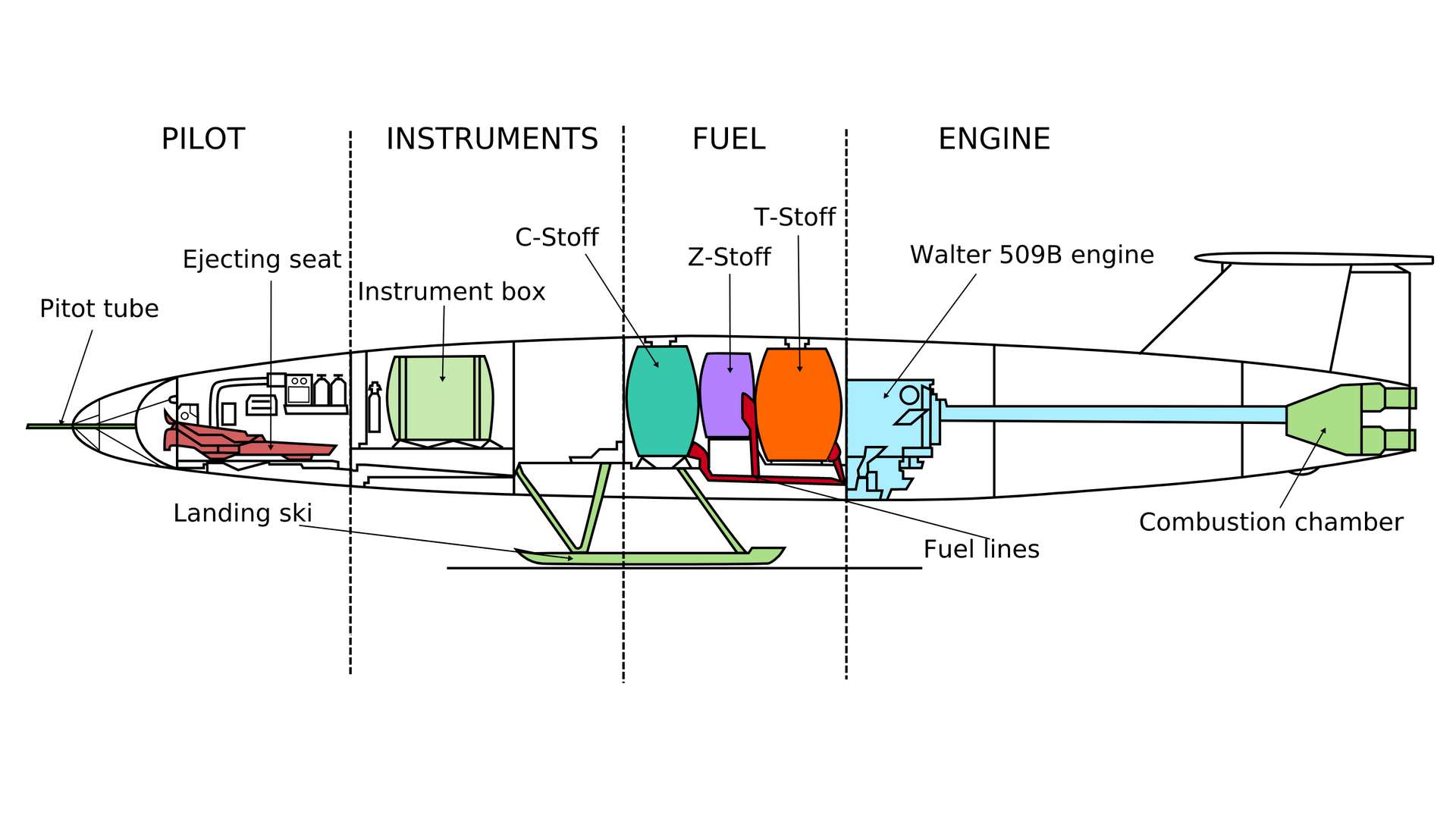
By this point supersonic research had gone off into other areas and the Soviets saw no future in the 346 project, terminating it. There was, however, another supersonic rocket glider design called the Bisnovat 5 inspired by the DFS/Samolyot 346. This, however, had some rather dangerous flight characteristics, and having never flown a powered test flight, this too was cancelled in late 1949.
Swept for Speed
Once the dust of the Second World War had settled and the Allies were discovering the myriad of projects that had been taking place to provide Adolf Hitler with his ‘wonder weapon’. The research of these German scientists and engineers greatly influenced the work being carried out in Britain, the US, and the Soviet Union. The Messerschmitt Me163 and the DFS346 certainly looked dramatic, but both featured a key development in high-speed flight; the swept wing.
By the 1940s having enough power was becoming less of a problem with rockets and the development of the jet engine. What remained was overcoming the aerodynamic wall that stood at the transonic range often rendering aircraft uncontrollable. The swept wing was developed before WWI for use in tailless designs due to its self-dampening effects, and German aero engineer Adolf Busemann saw their potential in overcoming the stability issues experienced when approaching the Speed of Sound.
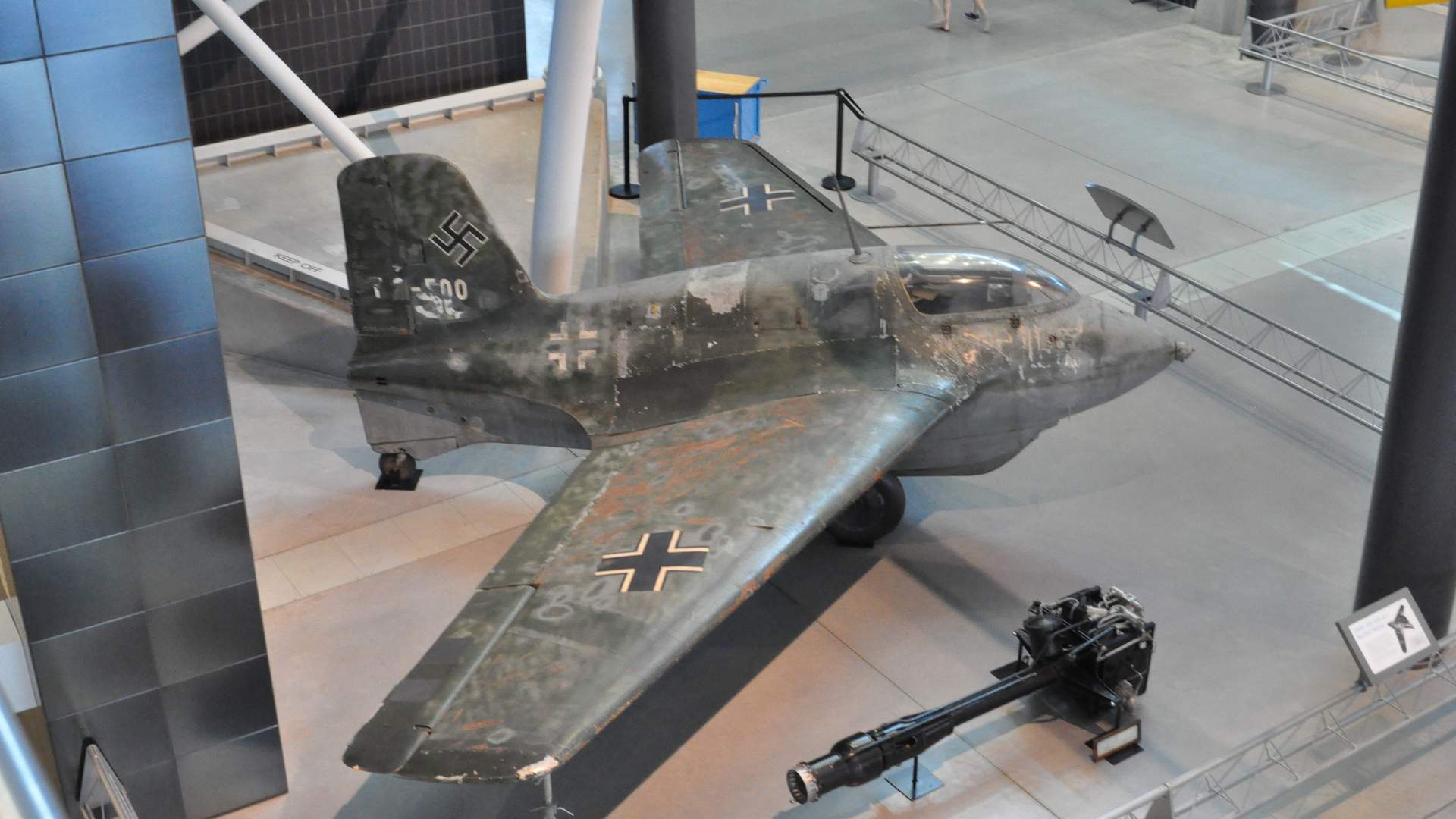
He presented the idea at the October 1935 Volta Conference on High Speeds in Aviation in Italy. But the idea went unnoticed, even though the conference was attended by several notable figures such as Von Karman, Dryden, and Eastman Jacobs from NACA who as we saw earlier were also conducting research into supersonic flight.
Although not considered by the Americans, Busemann’s proposals were adopted by Alexander Lippisch through his work on the Messerschmitt Me163 Komet, and by the end of the war, Busemann’s swept wing was present in many proposed designs by Messerschmitt, Focke-Wulf, and Junkers. A swept wing was also tested on a modified V2 rocket and broke the sound barrier but is believed to have broken up on reentry doing Mach 4. Later NACA tests showed that Werner von Braun’s V2 was capable of reaching Mach 5, the threshold of the Hypersonic.
When the Allies began collecting and analysing German research efforts, they received a very unpleasant surprise at Hitler’s secret aeronautical research department called the Luftfahrtforschungsanstalt. Here they saw test data and designs for swept wings, and more importantly, their benefits for high-speed flight. These swept wings created great anxiety among the Allies who had been working on their own transonic designs and caused the powers at be to reconsider the feasibility of their straight-winged projects.
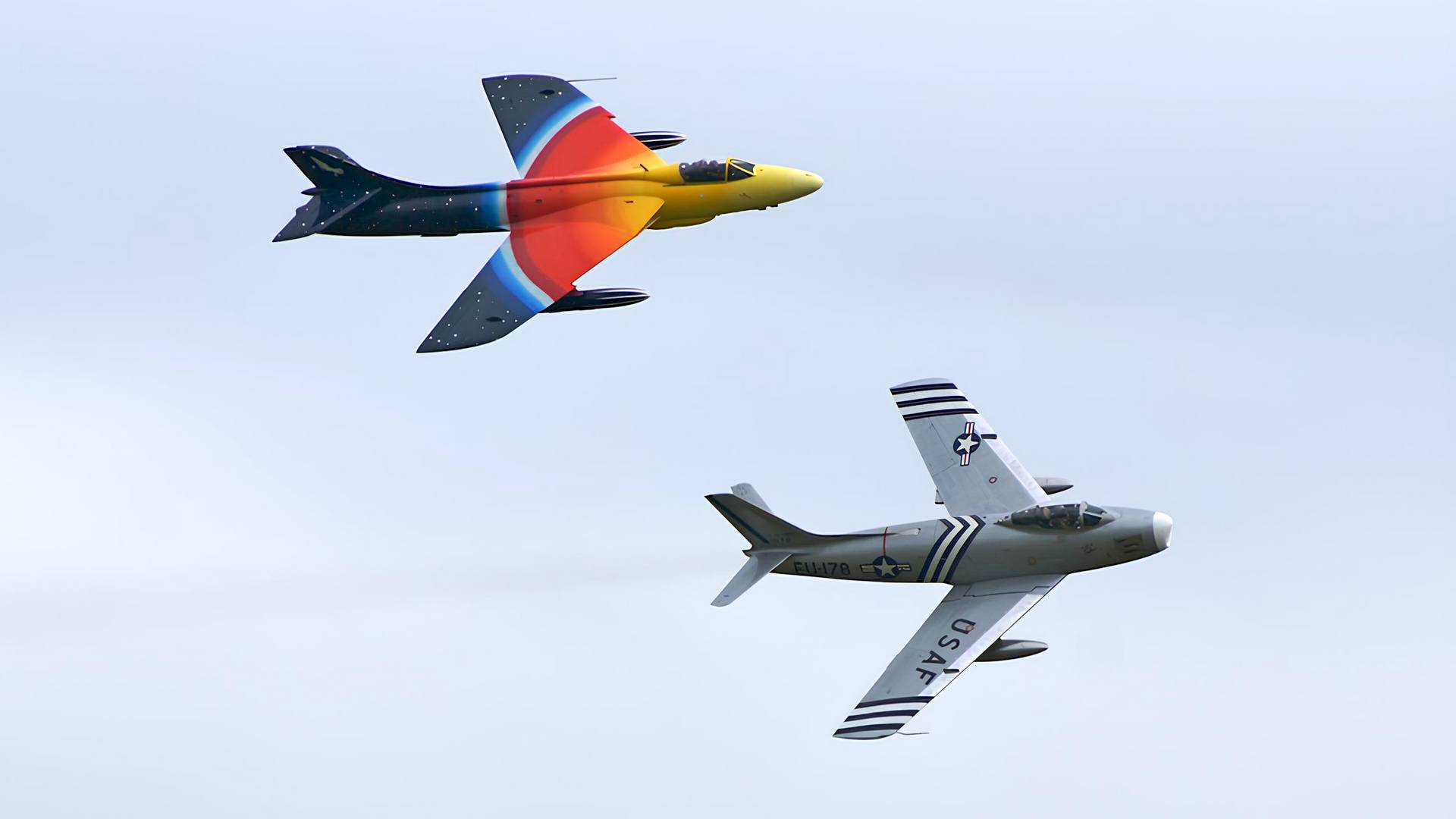
In Britain at least, these revelations were so significant that orders were dispatched to cancel all high-speed projects that didn’t incorporate swept wings. Engineers at Miles Aircraft who were working on a supersonic design knew of swept wings and pointed out that although they were good for low supersonic speeds, as the speed increased above Mach 1, the drag coefficient of straight wings fell.
The Americans were also alarmed by what was coming out of Germany, and Bell Aircraft came in for heavy criticism for not developing a swept-wing design for the upcoming X-1. Bell responded to these criticisms by suggesting that they wanted to avoid introducing more uncertainties into their project as necessary. US research into swept wings, however, showed great promise and came to heavily influence the development of the F-86 Sabre.
This did little to alleviate anxieties over swept wings with them being used on the following X-2, and the Navy was even more worried. Having backed the Douglas D-558 as a more practical supersonic design, they split their development into three examples of straight-winged D-558-1s and three swept-winged D-558-2s. Today the swept wing is used on the vast majority of high-speed aircraft, but as we will see later, a razor-thin straight wing proved ample to overcome the sound barrier.
End of Part IV



